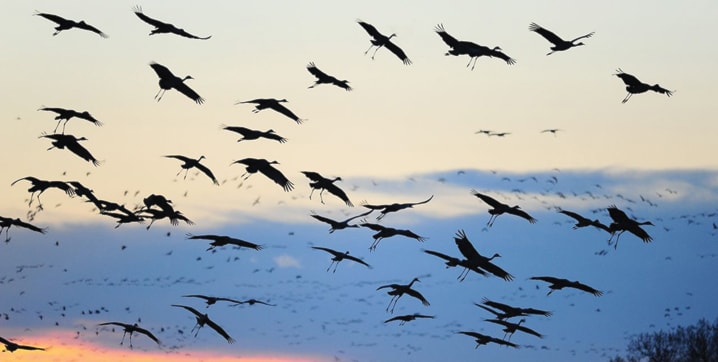I had the good fortune last month to witness one of the most magical and dramatic wildlife spectacles on the North American continent — the spring migration of sandhill cranes through the Platte River in Nebraska.
For a few weeks each spring — as they have done for millennia — hundreds of thousands of sandhill cranes funnel through and stop on a narrow strip of river in central Nebraska to rest and eat before heading to their Northern breeding grounds. They congregate here from wintering grounds that extend across Mexico and the southern U.S.
Peering into the sunset through the tiny porthole in a bird blind, I was awestruck by the endless black clouds of these loud croaking giants that appeared, swirled and then gracefully parachuted down to the water.
Looking out over the cacophonous throng, I pondered one of nature’s great mysteries — which birds would travel as far as Central Alberta to nest, which ones would decide to fly all the way to Siberia (the outer reaches of their range) and which ones would fill the areas in between?
Sandhill cranes nest in West Central Alberta, usually in isolated marshes and bogs that are encircled with trees.
Later in the summer, family groups can often be seen wandering through open pasture areas.
Two great places to see them close to Red Deer are from the viewing blind at Medicine River Wildlife Centre and at Crimson Lake Provincial Park near Rocky Mountain House.
I highly recommend a trip to experience this amazing natural history event.
Arrangements for guided trips to a bird blind for both sunset and sunrise viewing can be made through the Rowe Sanctuary, which is located just outside of Kearny, NE. http://www.rowesanctuary.org/
Myrna Pearman is the Biologist/Site Services Manager at Ellis Bird Farm. She can be reached at info@ellisbirdfarm.ca
